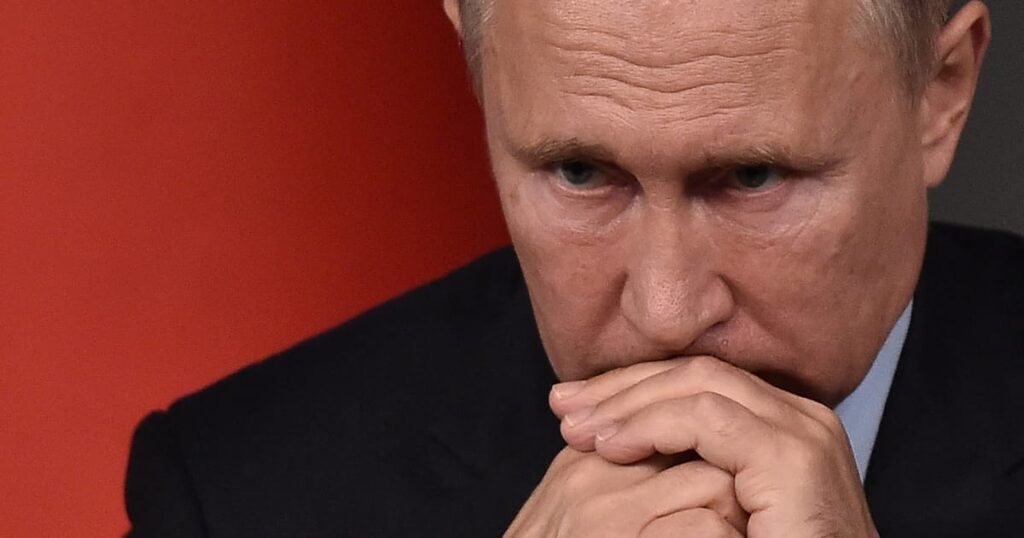Press play to listen to this article
Voiced by artificial intelligence.
Ivo Daalder, former U.S. ambassador to NATO, is president of the Chicago Council on Global Affairs and host of the weekly podcast “World Review with Ivo Daalder.”
Last week’s NATO summit was overshadowed by an angry tweet posted by Ukrainian President Volodymyr Zelenskyy just as alliance leaders were gathering in Vilnius. “It’s unprecedented and absurd when timeframes are not set neither for an invitation nor for Ukraine’s membership,” Zelenskyy tweeted. “Uncertainty is weakness,” he added for good measure.
The tweet sparked uproar and dominated headlines and commentary throughout the two-day meeting in Lithuania. That’s unfortunate. For missed in the turmoil surrounding the tweet and Ukraine’s disappointment, is a larger and more lasting story.
Seen from the perspective of the Kremlin, the NATO meeting can hardly have been comforting — once again underscoring how truly colossal a strategic mistake Vladimir Putin’s decision to launch a full-scale invasion of Ukraine has turned out to be.
Let’s start with the issue that so upset Zelenskyy. An invitation to Kyiv to join NATO was never in the cards. As even the Ukrainian president recognized, bringing a country at war into an alliance whose fundamental purpose is to defend every inch of its members’ territory just wasn’t going to happen. For weeks, NATO countries made it clear that they would help Ukraine defend itself, but they would not themselves become direct parties to the war.
But short of an invitation, NATO leaders in Vilnius made clear that “Ukraine’s future is in NATO.” As U.S. President Joe Biden declared, Ukraine’s membership was not a question of whether, but of when.
NATO also agreed to dispense with the normal requirement that Kyiv first join its Membership Action Plan, which would delay Ukrainian membership once the war is over.
Seen from Moscow, none of this is reassuring. Putin told Russian television that Ukraine’s possible NATO membership was one reason for launching the invasion. He even suggested it “won’t increase Ukraine’s security” — as if his brutal invasion somehow hadn’t already done so. If anything, Putin’s decision to attack has made Ukraine’s membership of NATO inevitable — if not immediately, then once the fighting has subsided. Ukraine, Biden said, “will join NATO.”
No doubt it wasn’t just Ukraine’s pending membership of NATO that must have been deeply disconcerting for the Kremlin. NATO countries also came to Vilnius with significant commitments of new military aid to Ukraine.
France promised to deliver long-range missiles, joining Britain in doing so (and likely leading the U.S. finally to send its long-range ATACMS to Ukraine as well). Germany promised to send another 25 tanks. The Netherlands and Denmark agreed to coordinate training of Ukrainian pilots to fly F16s. And Washington committed to filling the gap in Ukraine’s artillery inventory by sending hundreds of thousands of cluster munition rounds. All this will strengthen Kyiv’s ability to conduct a successful counter-offensive against Russian forces.
And if Putin thought Western determination to help Ukraine militarily would subside, the G7 leaders gathered in Vilnius to disabuse him of that hope. The seven largest industrial democracies issued a declaration that assured Ukraine they were committed to sustaining its capacity to defend itself over the longer term — including after the war has ended.
The message to the Kremlin was clear: We stand with Ukraine now, and for years to come.
The NATO meeting was of course about more than just Ukraine — and none of that was good news for Moscow either. In Vilnius, Finland sat at the table as the 31st member of the alliance. Its accession more than doubled the NATO territory bordering Russia. That, too, was a consequence of Putin’s invasion, which, though ostensibly launched to keep NATO well back from its borders, has brought the alliance much closer.
With Turkey lifting its objections on the eve of the summit, Sweden will soon be the 32nd member of the alliance. That will turn the Baltic Sea into a NATO lake — in effect bottling up the Russian Baltic fleet in its home ports. And the Arctic will become a NATO-dominated space; except for Russia, every one of the eight Arctic nations will be NATO members.
Finally, least public attention was paid to what ultimately will be Russia’s biggest headache: a collective commitment to significantly bolster NATO’s planning and capacity to defend every inch of alliance territory — including its eastern flank. Germany announced it will deploy 4,000 troops to Lithuania, and Canada will double its presence in Latvia. And NATO committed to be able in the future to deploy 300,000 troops in 30 days.
The leaders also adopted three regional defense plans drawn up by NATO’s top general, addressing the defense of the northern, eastern, and southern flanks.
These plans existed during the Cold War, but this is the first time in 30 years NATO has drawn up detailed plans to defend itself, including setting out force requirements for every NATO nation — how many tanks, troops, missiles, ships, planes, and hundreds of other military capabilities each member needs to have available.
To pay for it all, NATO leaders agreed to make the 2 percent of GDP military spending guideline a floor rather than a ceiling. In effect, NATO will add double the amount to its annual defense spending to what Russia spends on defense each year.
All of this adds up to a remarkable two days of work. Seen from Moscow, NATO’s commitment to Ukraine is stronger and more tangible than before, its unity strengthened and more secure, and its defensive capacity enhanced and expanded.

